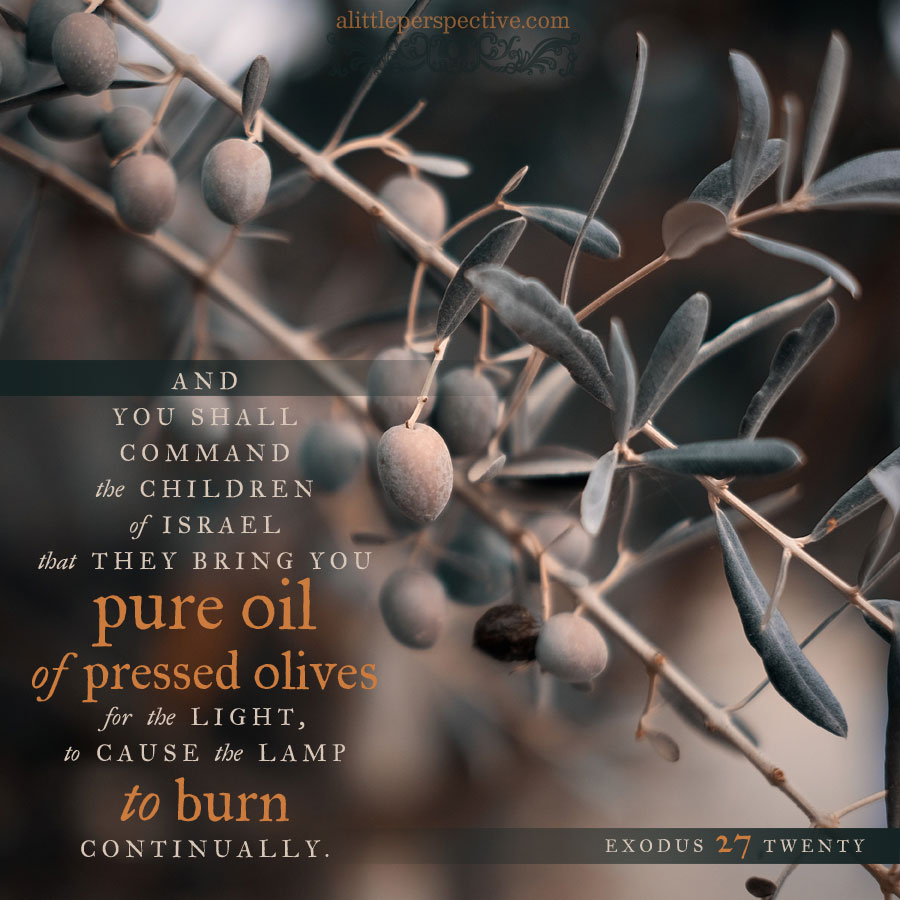Read Exodus 27 here or at Bible Gateway.
The Hebrew paragraphs:
27:1-8 {s} The pattern for the altar
27:9-19 {s} The pattern for the outer court
27:20-21 {s} Oil for the lampstand + continual tending of the lampstand’s light
I have been dwelling on the tabernacle not only as an end in and of itself, but as a natural picture teaching a spiritual truth. Natural pictures are a teaching tool of Scripture, and one Yeshua made heavy use of in His first advent. Parables are, after all, a natural picture which teaches a spiritual truth.
We learned that the tabernacle consisted in three parts.
Holy of Holies, surrounded by
Holy Place, surrounded by
Outer Court.
The Holy of Holies was the innermost part, containing only the ark of the Covenant. Overshadowed by the wings of the golden cherubim, the ark represented the throne of God on the earth. The ark was a hollow box within which were the two tablets of the Ten Commandments, the summary of the Torah. And covering over the box, was the mercy seat, the place of God’s presence.
The heart of man, the physical heart of man’s body, is also a hollow box. This hollow organ holds within it the life-giving blood, which it then distributes to all corners of the body. In the same way, the spiritual heart or inner man is hollow and is meant to hold something within it that it distributes to all corners of the person. YHVH admonishes us to be sure that His words and His Word, Yeshua, are what fills our hearts. They are life-giving, and the heart will distribute that life from the inner man to all corners of the person. The natural picture of the ark is an object lesson representing the heart of man, and the Holy of Holies, the spirit of man.
The Holy Place surrounded the Holy of Holies, and within it was the lampstand, the table of showbread, and the altar of incense. The light of the menorah, the bread of God, and the holy incense were renewed daily. The bread and light represents the Word, God’s word to us (Mat 4:4, Psa 119:105). The incense represents prayer, our word to God (Psa 141:2). The Holy Place represents the soul of man: the mind, will, and emotions, within which God’s Word to us (Bible reading) and our word to God (prayer) must be daily renewed.
The Outer Court surrounded the Holy Place and the Holy of Holies. The laver for washing, and the bronze altar of sacrifice, was located in the outer court. It represents the physical body of man. It is the body, the outer court, that must be daily washed. It is the physical body which touches the fallen world. It is, moreover, the deeds of the body that must be daily confessed, and repented, and the sin sacrifice of the blood of Messiah Yeshua applied.
If there are questions, these are good resources:
The Teaching Tools of Scripture – Christine Miller
The Torah is the Ten Commandments – Christine Miller
Hebrew Root Parable of Leb, “Heart,” Strong’s H3820 – Christine Miller
The Tabernacle series – Brad Scott (scroll down)

















Leave a Reply